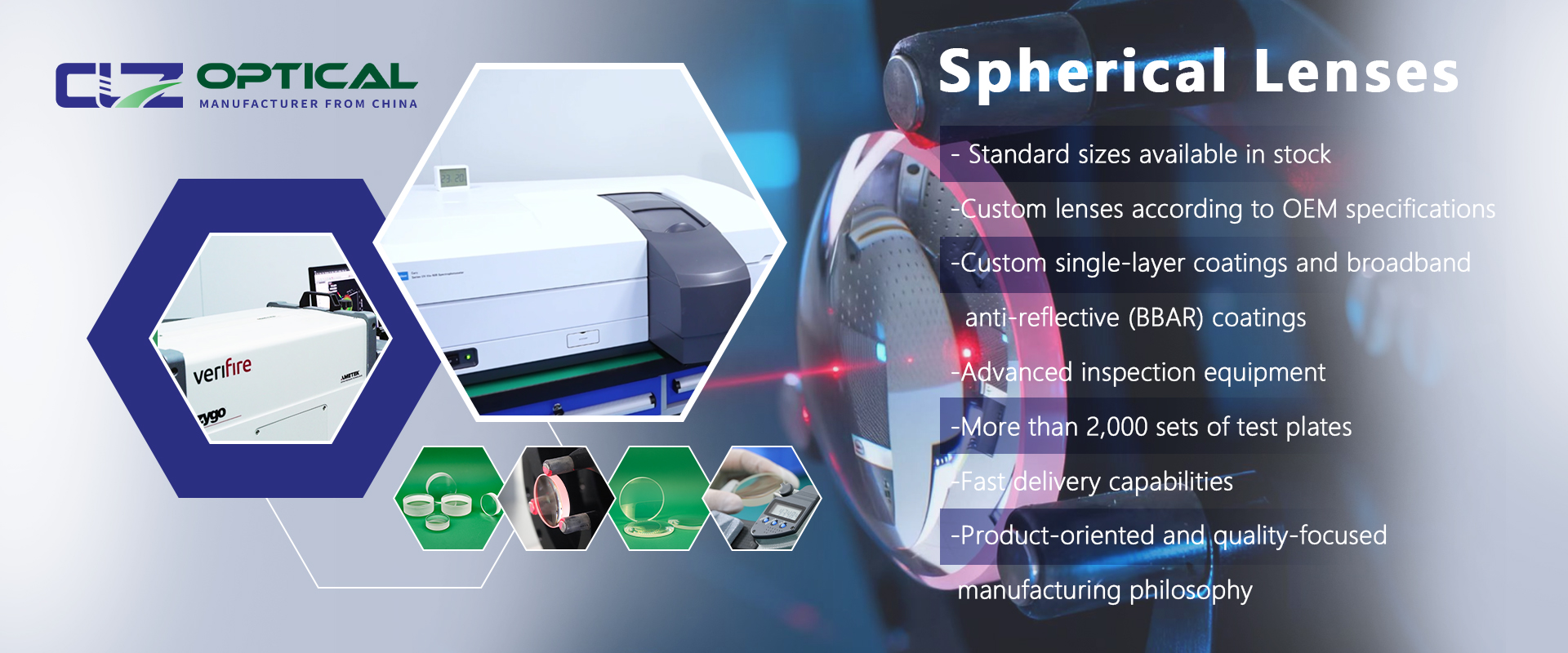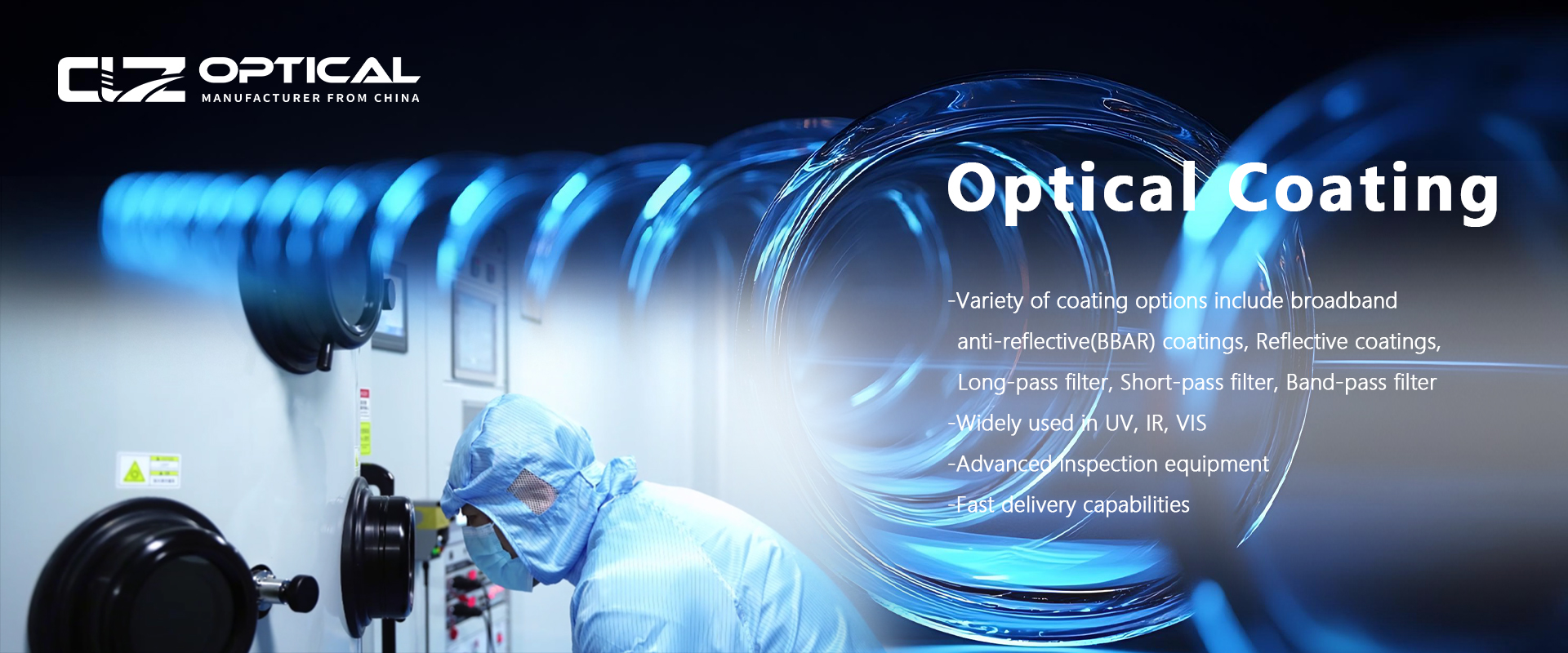Typical Optical Glass Materials and Features
Nov. 11, 2025
Typical optical glass materials:Calcium fluoride (CaF2),fused silica,N-BK7
I. Calcium fluoride (CaF2) is transparent from the ultraviolet to the infrared (180nm - 8.0 µm). It has a refractive index of 1.428 at 1.064 µm and exhibits high mechanical and environmental stability. Calcium fluoride offers a high damage threshold, low fluorescence, and high uniformity, making it ideal for demanding applications with these requirements.
II. N-BK7 is a RoHS-compliant borosilicate crown glass. It offers high transmittance in the visible and near-infrared (350nm - 2.0 µm) range. N-BK7 is likely the most commonly used glass in high-quality optical components. N-BK7 is a hard glass capable of withstanding a variety of physical and chemical stimuli. It is scratch-resistant and chemical-resistant. Due to its low bubble and impurity content, it is well-suited for manufacturing precision lenses. N-BK7 has a refractive index of 1.517 at 587.6nm.
III . Ultraviolet-grade fused silica (UVFS) is ideal for ultraviolet applications exceeding the transmission range of N-BK7. Compared to N-BK7, UVFS offers a wider transmission range (185nm - 2.1 µm) and provides a lower refractive index and higher uniformity. It is scratch-resistant and has a low coefficient of thermal expansion. UVFS exhibits almost no fluorescence when exposed to wavelengths above 290nm. Its refractive index is 1.458 at 587.6nm.
Quartz optical glass is classified according to its optical properties:
1. (Far-Ultraviolet Optical Quartz Glass) JGS1
This is an optical quartz glass made by melting synthetic stone with a high-purity oxyhydrogen flame. Therefore, it contains a large amount of hydroxyl groups (approximately 2000 ppm), exhibiting excellent ultraviolet transmittance. Especially in the short-wave ultraviolet region, its transmittance far surpasses that of all other types of glass. The ultraviolet transmittance at 185nm can reach over 90%. Synthetic quartz glass has a strong absorption peak at 2730nm and lacks a granular structure. It is an excellent optical material in the 185-2500nm range.
2.(UV Optical Quartz Glass ) JGS2
Quartz glass is made from crystals through gas refining and contains tens of PPM of metallic impurities. Its absorption peak (hydroxyl content 100-200 ppm) is at 2730nm, exhibiting a strip-like and granular structure. It is an excellent material in the 220-2500nm wavelength range.
3. (Infrared optical quartz glass) JGS3
Quartz glass produced using crystal or high-purity quartz sand as raw materials in a vacuum pressure furnace (i.e., electrofusion method) contains dozens of PPM metallic impurities. However, it exhibits small bubbles, a granular structure, and striations, contains almost no OH (hydroxyl radical), and has high infrared transmittance. Its light transmittance exceeds 85%. It is suitable for optical materials in the 260-3500nm range.
There is another type of full-spectrum optical quartz glass in the world. It is used in the wavelength range of 180-4000nm and is produced by plasma chemical phase deposition (anhydrous and H2-free). The raw material is high-purity SiCl4. Adding a small amount of TiO2 can filter out 220nm ultraviolet light, resulting in ozone-free quartz glass. Ultraviolet light below 220nm can convert oxygen in the air into ozone. Adding small amounts of elements such as titanium and europium to quartz glass can filter out short-wavelength light below 340nm. Using it to make electric light sources has health benefits for human skin. This glass is completely bubble-free. It has excellent ultraviolet transmittance, especially in the short-wave ultraviolet region, far superior to all other eyeglasses. Its transmittance at 185nm is 85%. It is an excellent optical material in the 185-2500nm wavelength range. Due to the presence of OH groups, its infrared transmittance is relatively poor, especially with a large absorption peak near 2700nm.
Compared to ordinary silicate glass, transparent quartz glass exhibits superior transmittance across the entire wavelength range. In the infrared region, its spectral transmittance is greater than that of ordinary glass, and in the visible region, quartz glass has even higher transmittance.
In the ultraviolet region, especially the short-wave ultraviolet region, the spectral transmittance is far superior to that of other types of glass. Spectral transmittance is affected by three factors: reflection, scattering, and absorption. Quartz glass typically has a reflectance of 8%, with a large ultraviolet range and a small infrared range. Therefore, the transmittance of quartz glass generally does not exceed 92%. The scattering of quartz glass is very small and can be ignored.
Spectral absorption is closely related to the impurity content and manufacturing process of quartz glass. Transmittance below 200nm represents the content of metallic impurities. Absorption at 240nm represents the number of oxygen-deficient structures. It is evident that absorption in this band is caused by transition metal ions, and the absorption at 2730nm is the hydroxyl absorption peak, which can be used to calculate the hydroxyl absorption peak value.
Common Optical glass material characteristics
| Optical Glass Types | Manufacturer | Wavelength Range | Cost | Features | Application |
| H-K9L | CDGM | 350-2000nm | Lower | Free from radioactive elements, scratch-resistant, and wear-resistant. | High-quality cold-processed optical components |
| N-BK7 | Scholt | 350-2000nm | High | It contains no radioactive elements, with high hardness,scratch-resistant, and wear-resistant, and it has a high coefficient of thermal expansion, making it unsuitable for environments with fluctuating temperatures. | High-quality cold-processed optical components |
| JGS1 | CDGM | 185-2100nm | Higher | High transmittance from ultraviolet to near-infrared, scratch-resistant, wear-resistant, low coefficient of co-expansion, and high damage threshold. | High-precision optical components, temperature-varying environments |
| UVFS | Corning | 185-2100nm | High | High transmittance from ultraviolet to near-infrared, scratch-resistant, wear-resistant, low coefficient of co-expansion, and high damage threshold. | High-precision optical components, temperature-varying environments |
| Znse | 600 nm-16μm | High | The material is soft, easily scratched, and has good heat resistance. | carbon dioxide laser | |
| Si | 1.2 μm-8μm | High | Low density, high temperature resistant | Infrared reflector | |
| Ge | 2 μm-16μm | High | Temperature sensitive, high density | Thermal imaging, remote sensing technology | |
| Sapphire | 150 nm-5μm | High | Extremely high hardness, chemically inert | Window, protective film |




















